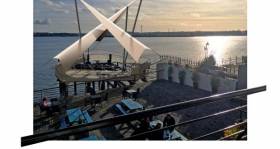Displaying items by tag: Heartbreak Pier
Cobh's Historic Heartbreak Pier Departure Point to be Restored
#CorkHarbour - An historic pier in Cork Harbour, where an estimated 1 million Irish emigrants bade farewell to loved ones as they left for America and Canada is about to be saved in a major €500,000 restoration project.
According to The Irish Times, Heartbreak Pier, as it was dubbed by locals in Cobh, was the departure point for generations of Irish emigrants from the then Queenstown, including the 123 people who boarded the SS Titanic on April 11th, 1912.
The Titanic passengers departed from the White Star Line Pier on board the tenders PS Ireland and PS America to join the ship, which had moored off Roche’s Point before departing for New York.
Of those 123 passengers, just 44 were to survive when, on April 14th, the SS Titanic hit an iceberg some 600km south of Newfoundland and went down with the loss of 1,517 lives.
Click here to read more on this story.
























































